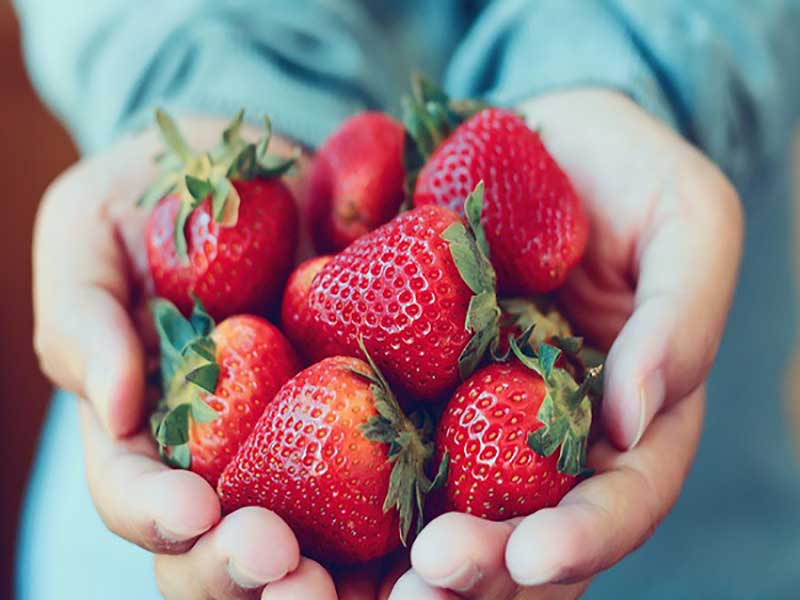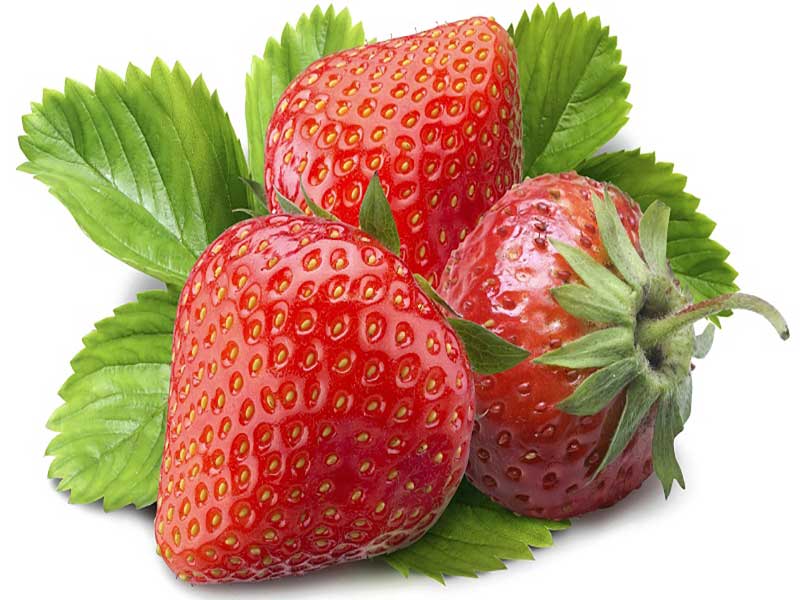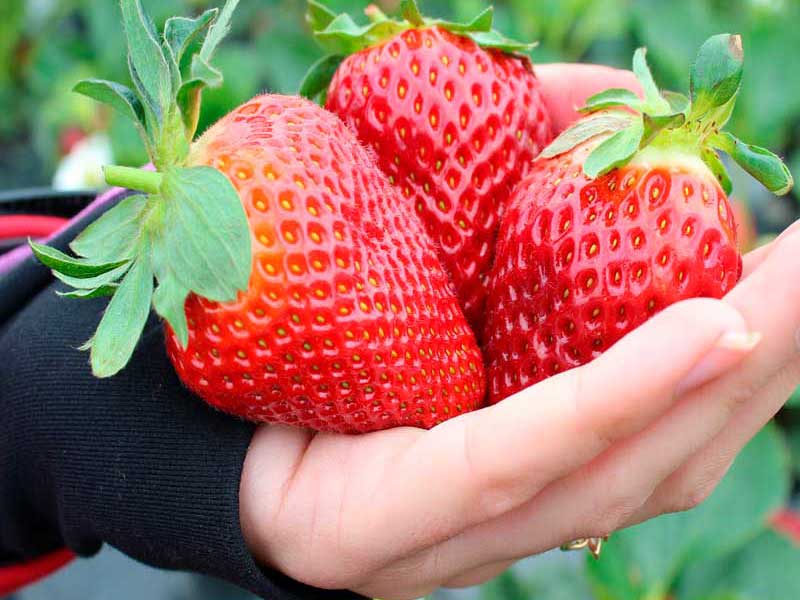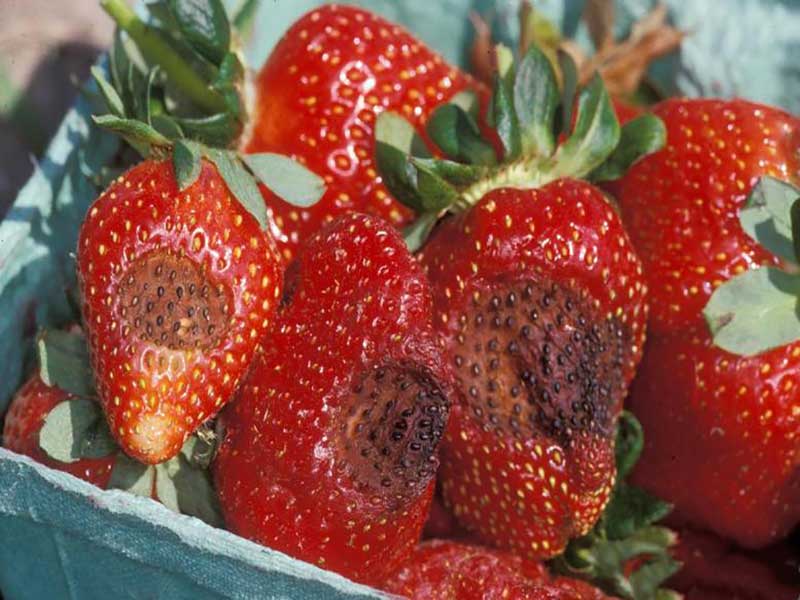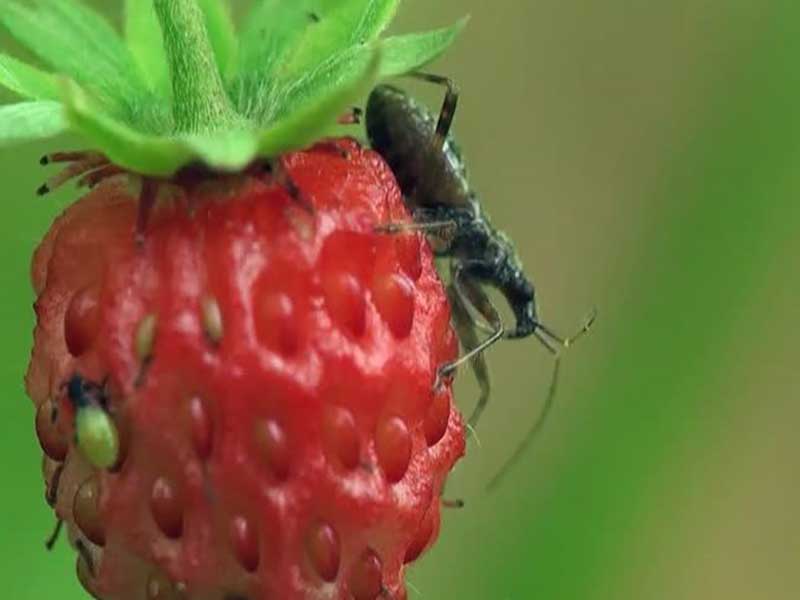How to harvest strawberries - Chapter Five
The purpose of this article is to provide information on how to plant, hold and harvest strawberries. In this article, we will introduce you to how to harvest strawberries in the greenhouse, which includes the cases, each of which we have fully explained. Chapter Five
harvest
Harvesting strawberries in the field should be done in the morning or evening at times of the day when the weather is cooler and the fruit is completely red and should be packed cool immediately after harvest and sent to the consumer market. Greenhouse cultivars are harvested regularly throughout the year. It is better to harvest the fruit with a little from the tail so that you do not put pressure on the fruit when harvesting. Due to the extreme vulnerability of the fruit, it should be packed in shallow boxes and taken care of during transport.
Harvesting and packaging
Reduce strawberry waste:
Did you know that strawberries are one of the most perishable fruits? Did you know that strawberries have a lot of metabolic activity?
Do you know all the people who work in different stages, from strawberry harvest to shipment to the markets, without realizing that they can damage the product?
Strawberries are one of the most perishable fruits and should be harvested when fully ripe. Excessive metabolic activity of strawberries can cause its elimination even without the presence of spoilage agents.
The structure of strawberries is such that it is vulnerable to spoilage, this product has a very thin and soft coating that is easily removed, also the flesh of the fruit is soft and makes it very vulnerable to impact and pressure .
Injuries first soften the strawberries, then provide a good place for pathogens to attack. Excessive metabolic activity and fruit susceptibility to microbial damage and spoilage warn strawberry growers to be extremely careful when harvesting strawberries.
The role of temperature in strawberries:
Do you know that temperature is one of the most important factors in reducing or increasing the spoilage of strawberries in the field and storage?
Temperature is the most important factor in reducing or increasing activities that lead to rot and rot of strawberries, the intensity of strawberry respiration is very high and air temperature can play a role of decreasing or increasing respiration. Storing strawberries at zero degrees Celsius provides the most storage for this product (staying healthy in storage), if the temperature of strawberries reaches zero from 10 degrees Celsius, the rate of fruit spoilage will be multiplied, and Placing strawberries in front of the sun after harvest and a temperature of about 30 degrees Celsius causes the most damage to strawberries.
The role of quality control:
Did you know that strawberry growers must strictly adhere to the concept of quality control from on-site production to market delivery?
Quality control in strawberries includes steps that start from the farm and continue until the product is introduced to the market. High quality first class crop should be selected in the field and any pressure and damage to the strawberry should be avoided during the harvest stage and after that. Any delay in cooling the product multiplies the rate of fruit spoilage, placing the product in proper packaging and shipping the product in optimal conditions can also help complete the quality control problem.
The role of fungal pathogens in strawberries:
Fungal pathogens play an important role in the contamination of strawberry fruits. The most important fungus that infects strawberries is gray mold. Gray mold can enter the primary organ of fruit formation from the beginning of flower buds and stay there until the fruit ripens, or it enters when the fruit softens or is damaged. Start its destructive activity inside or on the fruit. These molds cause more damage when it rains and humid weather. This disease is better active in hot weather and continues to be less active at temperatures close to zero.
Another fungal pathogen that causes much more serious damage to strawberries at higher temperatures is called rhizopus, whose activity is limited to 5 ° C. Observing hygiene in the field, preventing fruit contact with wet soil, avoiding fruit damage, grading and removing contaminated and damaged fruits, controlling temperature and relative humidity, and in special circumstances, using large amounts of carbon dioxide during transportation can be Reduce spoilage or severity of fruit rot.
.jpg)
Role of injury:
Strawberries are very sensitive to serious injuries and damage during the harvesting and packaging stages. Many fruit growers, especially harvesters, are unaware of the importance of this seemingly simple injury and do not know that a simple mechanical operation over a period of several hours may create very bad conditions for destructive activity on the fruit. Provides.
Strawberries also suffer a lot of damage due to the use of improper boxes, overfilling of boxes, contact of the sharp edges of the box with the fruit due to pressure and also during transfer. In choosing the box and choosing the right means of transportation, it can prevent the occurrence of softness and crushing and subsequent onset of gray mold activity.
The role of moisture content and juice reduction:
Strawberries are full of water during ripening, which contributes to the freshness of appearance and freshness and marketability of the fruit.
Delay in harvesting and storing strawberries in a warm environment away from cold storage environment leads to loss of fruit juice, and with the loss of water, the appearance of the fruit becomes plastic and its marketability is greatly reduced.
Timely harvesting, rapid cooling, lowering the temperature of the fruit and increasing the relative humidity of the warehouse to 90 and 95%, can maintain the freshness of the fruit during storage and prevent it from plasticizing and contaminating.
Role of strawberry harvesting and grading:
Strawberries are harvested with the sepals at the time of harvest. The sepals play a positive role in the shelf life of the strawberries as a protector. they do. The fruit should be placed gently in the box, while ripe fruits are harvested when 75% of their surface is colored. At this time, fruits that are uniform in shape, color, and size are usually put in boxes and damaged and contaminated fruits are removed. Harvesters should refrain from damaging and kicking plants and fruits during harvest, in order to maintain the quality of fruit harvest in the next harvest.
Strawberry grading:
The set of grading operations of strawberries includes: cleaning, separation of damaged and defective fruits, separation based on quality factors such as: health, small and large, ripening and discoloration. Sometimes grading can be based on the industries that consume this product, in which case fruits without small or large sepals will be selected, this operation is done before packaging.
Strawberry packaging:
If the strawberries are packed in small containers, the grading should be done in advance and then sent to the refrigerator, but if the product is in bulk and refrigerated through the cooling tunnel, it is better to grade the strawberries to Postpone after initial cooling.
What do we expect from product packaging?
1) Protection and maintenance of package contents
2) Facilitate and accelerate product movement
3) Advertise the nutritional value of the product and place of production on the package
4) Observe customer orders and the desired fruit volume
5) The charm and health of the packaging
6) Product ventilation capability
7) Observance of environmental issues
Therefore, it can be said that half of the value of the product depends on how it is packaged. In the packaging of strawberries as a delicate and vulnerable fruit, it is expected that the health of the strawberries is maintained and properly ventilated inside the packaging, also that the fruits are not pressed together and the packaging is such that there is pressure. Do not overlap. Usually, in fresh eating uses, small packages of one kilogram and less are used, and in the fruit processing program in the conversion industry workshop, 5 to 6 kg packages are used.
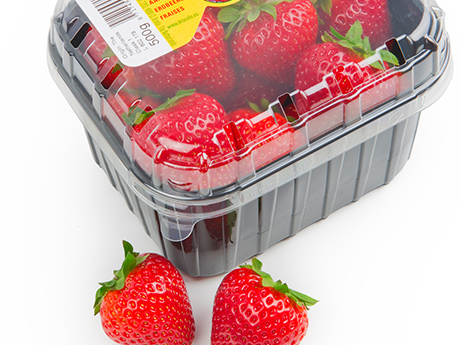
Importance of initial cooling:
Although it is often recommended that strawberry growers harvest the fruit during the cold hours of the day, farm owners are often forced to do so due to labor issues. Therefore, the fruit is often harvested at an hour when it is at the same temperature as the ambient temperature, and due to the high intensity of respiration in strawberries, the crop suffers from the first hour and begins harmful metabolic activities, inevitably using specialized refrigeration warehouses. The product seems inevitable.
Rapid cooling of the strawberry crop immediately after harvest is an operation independent of the cold storage issue. Primary cooling halls require special tools and equipment, to increase the storage capacity of perishable products such as strawberries and raspberries, performing primary cooling operations before transportation and storage in the cold store or offering the product to the consumer market, is essential. . In this method, cold water, cold air and surface evaporation in vacuum are used. The most appropriate method is to use cold air flow quickly. In the rapid flow of cold air, the speed of heat transfer from the product is high and the cooling rate increases. In addition, the cold air has the necessary pressure to penetrate the packages and boxes, and a suitable contact surface will be with the fruits.
Strawberry cold storage conditions:
Cold storage is a place where the temperature is higher than the freezing point of the storage product, this temperature usually varies from minus 2 to positive 16 degrees Celsius. The use of cold storage is the most appropriate method of fruit storage, in this method, the taste and texture of nutritional value and other characteristics of the product change less than other storage methods such as freezing, drying, storage by chemicals and preservatives. . The working principle of cold warehouses is based on the fact that by cooling the product to the freezing point during storage, any microbial, chemical and physical spoilage is completely slowed down and the storage capacity of the fruit increases.
The maximum useful storage time for strawberries is one to two weeks at a temperature of about two degrees Celsius and a relative humidity of 90%. At low humidity, the crop loses its water and becomes plasticized and wilted, and the water in the strawberry evaporates from the middle layers of the cell and evaporates, and because the strawberry does not have enough power to prevent transpiration, water from Its watery parts come out in the form of steam. The degree of useful storage of the product in the cold house depends on various factors and conditions such as the intensity of respiration, the amount of relative humidity, storage temperature, the amount of mechanical damage to the fruit and the purity of air and light.
Management of control and reduction of strawberry waste:
In general, in a systematic and complete planning to reduce strawberry waste, all things must be considered. In this planning, first, the tasks that can be done before harvesting strawberries are put on the agenda according to the schedule, and pre-harvest treatments can be considered from the time the crop is stored on the farm:
1) You must be sure of the correct harvest time, cool hours of the day and early morning are the best times.
2) Proper harvest of strawberries is a very important point, at the time of harvest, the health of the inflorescence (set of flowers) should be considered after harvesting the berries, and secondly, when harvesting, the fruit should not be squeezed. Thirdly, the presence of sepals is important, and finally, the care of other plants in terms of yield and quality is important.
3) In proper planning for plant nutrition, more attention can be paid to quality issues after harvest. We know that the use of potash fertilizers can have a positive effect on the quality and taste of strawberries, as well as the use of calcium compounds in strength. Fruit tissues play a very important role, so the use of calcium sulfate in strawberry crops is common. In recent years, experiments have been performed on the effect of calcium chloride on leaves and fruits. The results showed a positive effect of calcium chloride on the shelf life of strawberries and prevented the growth of gray mold, but had a negative effect on fruit taste. Calcium chloride per hectare of strawberry field is 20 kg per turn.
4) Fungicidal compounds can be used before strawberry harvest, these compounds must have a short toxicity period so that their toxicity is completely eliminated from consumption. One of the honors of strawberry crop in Kurdistan province is that it is organic, so as far as possible, the use of these pesticides should be avoided. Used once a week during flowering and fruit development.
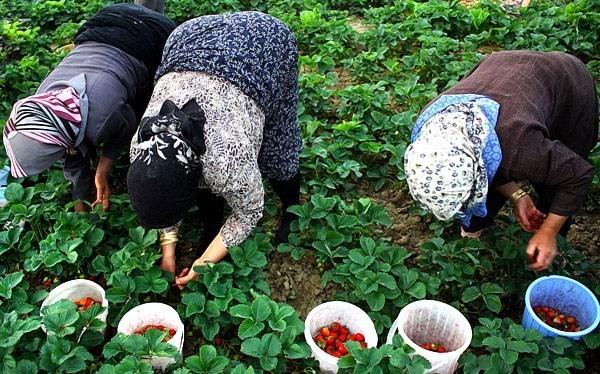
5) When packing strawberries, any damage and squeezing of the fruit should be strictly avoided, following any damage, metabolic activities increase and the attack of pathogens starts from the same point. After harvesting strawberries, you can reduce the amount of strawberry waste by doing a series of things. These include:
• Giving the strawberry an initial cold is one of the key points in its storage. We have already stated that strawberries are at room temperature at harvest time and their respiration rate is very high. They work to destroy the structure and texture of strawberries, so the initial cooling can greatly slow down these activities in a short time. To give the initial cold in a method, special rooms are used under vacuum and water spraying, in this method Due to the evaporation of water, the heat of the product is taken.In another method, the product is exposed to cold and high pressure cooling systems. In another method, cold water is used, which is not widely used in this method due to changes in the quality of the berries.
• Some processing plants freeze strawberries for long-term storage and store them in sub-zero cold stores. Strawberries will not be able to be eaten fresh like other fruits.
• In some types of packaging in which thin coatings, polyvinyl chloride are used, weight loss and juice loss are prevented and the quality of the fruit is maintained, thin PVC coatings have suitable elastic properties. And permeability is controllable, these coatings increase carbon dioxide and lower the amount of oxygen below it, which reduces the respiration of strawberries and increases its durability.
• Storage that can be controlled can also be used to store strawberries. Strawberries are one of the fruits that easily tolerate high amounts of carbon dioxide. On the contrary, lack of oxygen causes bad taste and bad taste of the fruit.
6) One of the best ways to combat live contaminants is to use biological methods. Currently, a compound extracted from the fungus called pyrrole nitrin is used as an antifungal agent to extend the shelf life of strawberries.
7) Another technique that has a good place today in disinfecting food, fruits and vegetables is the use of gamma ray radiation on the wall compounds of fruits.
8) A very suitable method for preserving strawberry fruit is the use of volatile compounds in strawberry extract. Recently, it has been proven that aromatic compounds extracted from strawberry extract can be effective in controlling fungal spoilage of fruit after harvest.
9) One of the most important and effective ways to reduce strawberry waste in the world is to pay attention to the firmness of strawberry tissue in the name of plant breeding. Fortunately, today, the researchers of this product have introduced very suitable cultivars with high degree of rigidity to the market, such as Selva, Camraso and Merck cultivars. These cultivars have produced more acceptable results in packaging, transportation and durability.

